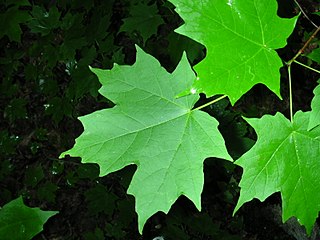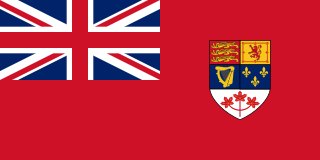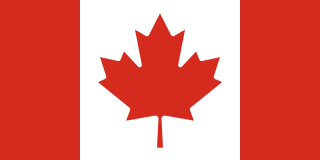 W
WNational symbols of Canada are the symbols that are used in Canada and abroad to represent the country and its people. Over the course of centuries a multitude of symbols and material items have arisen as uniquely Canadian or possessing uniquely Canadian characteristics. These symbols and items represent the culture of Canada—protectionism of that culture, identity, values, nationalism, and the heritage of its inhabitants.
 W
WAcer saccharum, the sugar maple, is a species of flowering plant in the soapberry and lychee family Sapindaceae. It is native to the hardwood forests of eastern Canada, from Nova Scotia west through southern Quebec, central and southern Ontario to southeastern Manitoba around Lake of the Woods, and northcentral and northeastern United States, from Minnesota eastward to Maine and southward to northern Virginia, Tennessee and Missouri. Sugar maple is best known for being the primary source of maple syrup and for its brightly colored fall foliage. It may also be known as "rock maple", "sugar tree", "birds-eye maple", "sweet maple", "curly maple", or "hard maple", particularly when referring to the wood.
 W
WThe North American beaver is one of two extant beaver species, along with the Eurasian beaver. It is native to North America and introduced in South America (Patagonia) and Europe. In the United States and Canada, the species is often referred to simply as "beaver", though this causes some confusion because another distantly related rodent, Aplodontia rufa, is often called the "mountain beaver". Other vernacular names, including American beaver and Canadian beaver, distinguish this species from the other extant beaver species, Castor fiber, which is native to Eurasia. The North American beaver is one of the official national wildlife of Canada symbols and is the official state mammal of Oregon and New York.
 W
WBox lacrosse, also known as boxla, box, or indoor lacrosse, is an indoor version of lacrosse played mostly in North America. The game originated in Canada in the 1930s, where it is more popular than field lacrosse and is the national summer sport. Box lacrosse is played between two teams of five players and one goalie each, and is traditionally played on an ice hockey rink once the ice has been removed or covered. The playing area is called a box, in contrast to the open playing field of field lacrosse. The object of the game is to use a lacrosse stick to catch, carry, and pass the ball in an effort to score by shooting a solid rubber lacrosse ball into the opponent's goal. The highest level of box lacrosse is the National Lacrosse League.
 W
WThe Canada 150 tulip, also known as the Maple Leaf tulip, is the official tulip of the 150th anniversary of Canada and was unveiled May 9, 2016, in Commissioners Park. The tulip was selectively bred with an elegant white flower and red flames, which resembles the flag of Canada. In September 2016, tulip bulbs went on sale at Home Hardware stores. For Canada's sesquicentennial celebration in 2017, the Canadian Tulip Festival in Ottawa planted over 200,000 Maple Leaf tulip bulbs.
 W
WThe Canadian Duality Flag is an unofficial flag that was originally circulated to demonstrate the unity of Canada during the lead-up to the 1995 Quebec referendum, at rallies for the "no" side. The Duality Flag design was chosen to represent explicitly the Francophone and Anglophone populations on the national flag by adding blue stripes to the red sections, roughly in proportion to the number of Canadians who are primarily French-speaking. The blue was chosen as it is the main colour that is used on the flag of Quebec.
 W
WCanadian football is a sport played in Canada in which two teams of 12 players each compete for territorial control of a field of play 110 yards (101 m) long and 65 yards (59 m) wide attempting to advance a pointed oval-shaped ball into the opposing team's scoring area.
 W
WThe Canadian horse is a horse breed from Canada. It is a strong, well-muscled breed of horse, usually dark in colour. The horses are generally used for riding and driving. Descended from draft and light riding horses imported to Canada in the late 1600s, it was later crossed with other British and American breeds. During the 18th century the Canadian horse spread throughout the northeastern US, where it contributed to the development of several horse breeds. During the peak popularity of the breed, three subtypes could be distinguished, a draft horse type, a trotting type and a pacing type. Thousands of horses were exported in the 19th century, many of whom were subsequently killed while acting as cavalry horses in the American Civil War. These exports decreased the purebred Canadian population almost to the point of extinction, prompting the formation of a studbook and the passage of a law against further export.
 W
WThe objective of the Canadian Parliamentary Flag Program is to enable Canadian parliamentarians, from both Senate and House of Commons, to promote national symbols and to encourage Canadians to express pride in their symbols.
 W
WThe Canadian Red Ensign served as a nautical flag and civil ensign for Canada from 1892 to 1965 and later as an unofficial flag of Canada before 1965. The flag is a British red ensign, with the Royal Union Flag in the canton, adorned with the shield of the coat of arms of Canada.
 W
WCanadian royal symbols are the visual and auditory identifiers of the Canadian monarchy, including the viceroys, in the country's federal and provincial jurisdictions. These may specifically distinguish organizations that derive their authority from the Crown, establishments with royal associations, or merely be ways of expressing loyal or patriotic sentiment.
 W
WThe Federal Identity Program (FIP) is the Government of Canada's corporate identity program. The purpose of the FIP is to provide to the public a consistent and unified image for federal government projects and activities. Other objectives of the program include facilitating public access to federal programs and services, promoting the equal status of the two official languages, and achieving better management of the federal identity. Managed by the Treasury Board Secretariat, this program, and the government's communication policy, help to shape the public image of the government. In general, logos – or, in the parlance of the policy, visual identifiers – used by government departments other than those specified in the FIP must be approved by the Treasury Board.
 W
WThe National Flag of Canada, often simply referred to as the Canadian flag or, unofficially, as the Maple Leaf or l'Unifolié, consists of a red field with a white square at its centre in the ratio of 1:2:1, in the middle of which is featured a stylized, red, 11-pointed maple leaf charged in the centre. It is the first flag to have been adopted by both houses of Parliament and officially proclaimed by the Canadian monarch as the country's official national flag. The flag has become the predominant and most recognizable national symbol of Canada.
 W
WThe flag of Carillon was flown by the troops of General Louis-Joseph de Montcalm during the Battle of Carillon, which was fought by the French and Canadian forces against those of the British in July 1758 at Fort Carillon.
 W
WThe Historical flags of the British Empire and the overseas territories refers to the various flags that were used across the various Dominions, Crown Colonies, Protectorates, territories which made up the British Empire and current Overseas territories. Early flags that were used across the Empire tended to variations of the Red and Blue Ensigns of Great Britain with no colonial badges or coat of arms attached to them. In the first half of the 19th Century, the first colonies started to acquire their own colony badges, but it was not until the UK Parliament passed the Colonial Naval Defence Act 1865 that the colonies were required to apply their own emblems.
 W
WIce hockey is a contact winter team sport played on ice skates, usually on a rink. Two opposing teams, typically fielding six skaters each, use sticks to shoot a vulcanized rubber puck into the other team's goal; the winner is the team to score most goals. In Canada, the United States, and some European countries the sport is known simply as hockey in everyday language; in virtually all other countries, "hockey" usually refers to field hockey.
 W
WJohnny Canuck is a Canadian cartoon hero and superhero who was created as a political cartoon in 1869 and was later re-invented as a Second World War action hero in 1942. The Vancouver Canucks, a professional ice hockey team in the National Hockey League (NHL), currently use a hockey playing "Johnny Canuck" logo as one of their team logos. In addition, the Vancouver Canucks' American Hockey League affiliate, the Abbotsford Canucks, use it as their main logo.
 W
WModern lacrosse in Canada has been a popular sport since the mid 1800s. Only field lacrosse was played until the 1930s, when box lacrosse was invented. In 1994 Parliament passed the National Sports of Canada Act which declared lacrosse to be "Canada's National Summer Sport", with ice hockey as the National Winter Sport.
 W
WThe maple leaf is the characteristic leaf of the maple tree. It is the most widely recognized national symbol of Canada.
 W
WThe national colours of Canada were declared by King George V in 1921 to be red and white and are most prominently evident on the country's national flag. Red is symbolic of England and white of France, the colours having been used representatively by those countries in the past. The maple is one of the national symbols and red is the first leaf colour after spring budding & also the autumn colour of maple leaves.
 W
WThe Royal Canadian Mounted Police, often known as the Mounties, are the federal and national police service of Canada, providing law enforcement at the federal level. The RCMP also provide provincial policing in eight of Canada's provinces and local policing on a contract basis in the three territories and more than 150 municipalities, 600 Indigenous communities, and three international airports. The RCMP do not provide active provincial or municipal policing in Ontario or Quebec. However, all members of the RCMP have jurisdiction as a peace officer in all provinces and territories of Canada. Despite the name, the Royal Canadian Mounted Police are no longer an actual mounted police service, with horses only being used at ceremonial events.
 W
WSix String Nation is public art and history project conceived by Jowi Taylor and centred around a steel-string acoustic guitar built from a variety of artifacts collected by Taylor representing diverse cultures, communities, characters and events from every province and territory of Canada. The building of the guitar was commissioned from Nova Scotia luthier George Rizsanyi.
 W
WThe Snowbirds, officially known as 431 Air Demonstration Squadron, are the military aerobatics or air show flight demonstration team of the Royal Canadian Air Force. The team is based at 15 Wing Moose Jaw near Moose Jaw, Saskatchewan. The Snowbirds' official purpose is to "demonstrate the skill, professionalism, and teamwork of Canadian Forces personnel". The Snowbirds are the first Canadian air demonstration team to be designated as a squadron.
 W
WSt Edward's Crown is the centrepiece of the Crown Jewels of the United Kingdom. Named after Saint Edward the Confessor, it has been traditionally used to crown English and British monarchs at their coronations since the 13th century.
 W
WRegional tartans of Canada are represented by all Canada's provinces and territories, except for Nunavut, having a regional tartan, as do many other regional divisions in Canada. Tartans were first brought to Canada by Scottish settlers; the first province to adopt one officially was Nova Scotia in 1956, and the most recent province was Ontario, in 2000. Except for the tartan of Quebec, all of the provincial and territorial tartans are officially recognized and registered in the books of the Court of the Lord Lyon, King of Arms of Scotland.
 W
WVive la Canadienne was the anthem of French Canadians in Quebec before it was replaced by O Canada. According to Ernest Gagnon, it was based on an old French tune, Par derrièr' chez mon père.